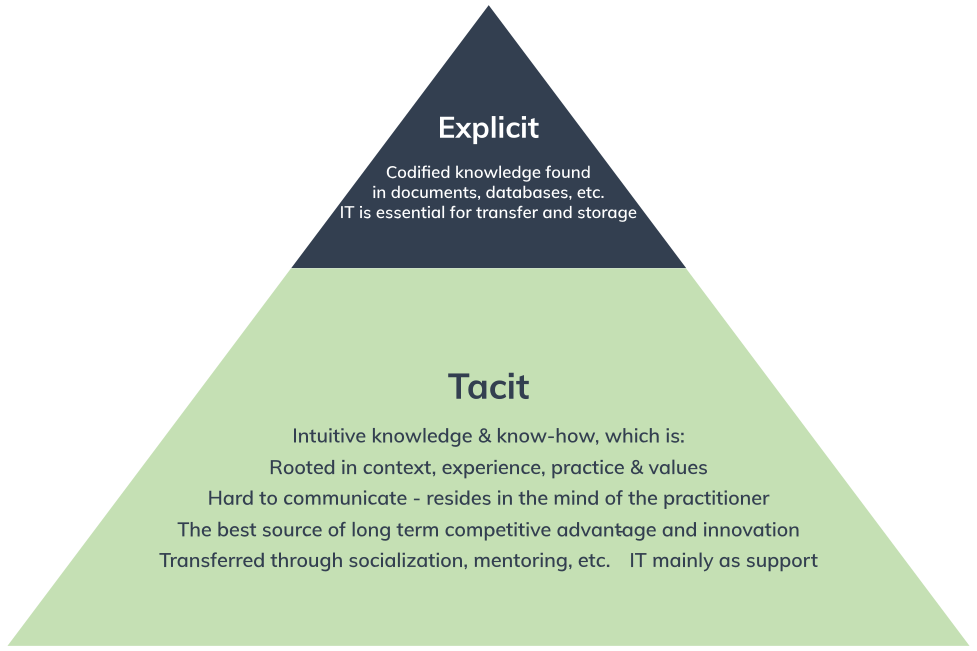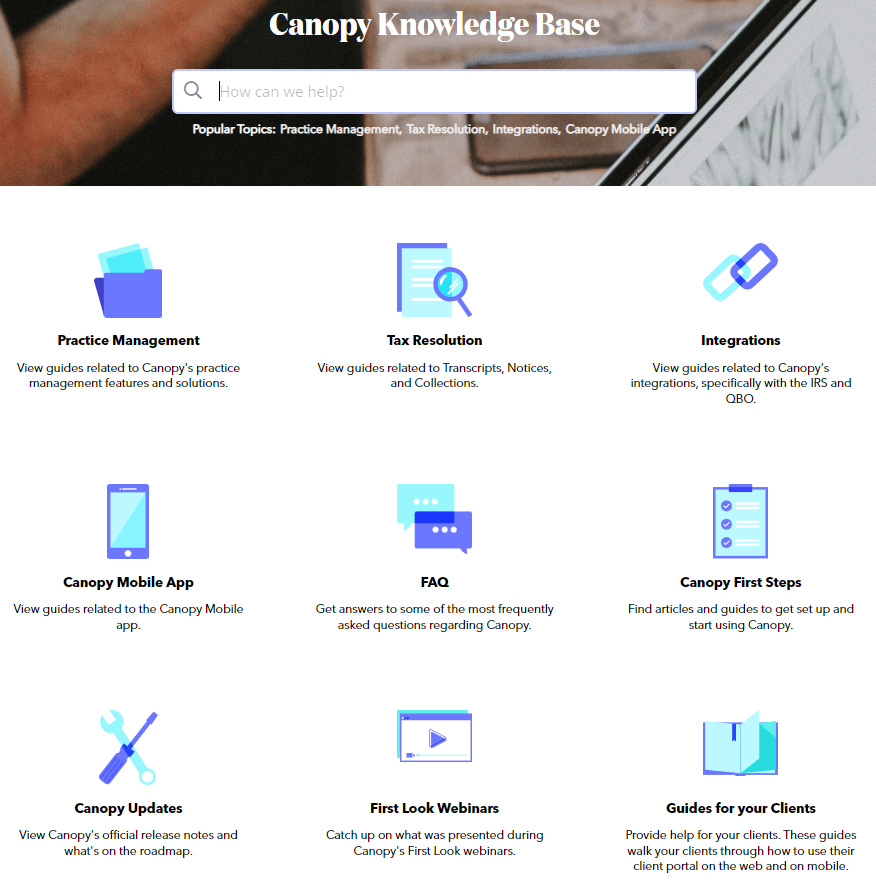
Tribal knowledge, also known as informal knowledge, refers to the unwritten, unspoken, and often implicit understanding, skills, and practices that exist within a group or organization. Think of it as being like the myths and legends passed down through the generations of your ancestors, spoken around the campfire, and changing over the years.
The form of the narrative evolves, but the essential story remains the same. That story represents the accumulated knowledge and understanding of the group and can be a valuable resource for organizations.
Having access to tribal knowledge is like the difference between a trainee cook following a complex recipe and a Michelin star chef with a store of intangible skills and experience who leads the way in the culinary arts.
Anyone can follow a recipe if you give them the correct steps and ingredients. However, the Michelin star chef, will turn their dish into a sought-after product that wealthy customers will pay thousands of dollars to sample.
That’s the crucial difference between documented organizational knowledge and the implicit skills and experience of your most specialized workers: heightened productivity and profits. “An investment in knowledge pays the best interest,” said former US President Ben Franklin, and his wisdom still rings true today!
In this post, we will delve more into the:
- What organizational trible knowledge is
- The importance of capturing and sharing tribal knowledge effectively
- How organizations can capture tribal knowledge
What is Tribal Knowledge?
Leonard Bertain offers a definition of tribal knowledge from an organization’s perspective. He describes it as “the collective wisdom of the organization. It is the sum of all the knowledge and capabilities of all the people.”
Basically, organizational tribal knowledge refers to the collective understanding, skills, and experiences of a group of people within an organization. It includes the accumulated wisdom and information that is shared informally among members of the organization and is not necessarily documented or formally codified. In a nutshell, tribal knowledge is any knowledge in your organization that has not been documented. Like tacit knowledge, tribal knowledge is stored in the heads of your employees, who have received it from local members of the “tribe”.
Organizational tribal knowledge can include things like best practices, processes, procedures, and even unwritten rules and norms that are unique to the organization. It is often passed down from one generation of employees to the next through word of mouth or informal mentorship and is a key component of the culture and identity of the organization.
How is Tribal Knowledge Created in the Workplace
Tribal knowledge in the workplace is created through the interactions, conversations, and experiences of the employees within the organization. There are a number of ways in which tribal knowledge can be created in the workplace, including on-the-job training, knowledge-sharing sessions, and experiential learning.
To actually make use of this tribal knowledge for the benefit of the employee and the organization, it's necessary to capture this knowledge to make sure that anyone who needs access to this knowledge can find it as well as for future use to make sure we don’t lose it when an employee leaves. As we'll see, to make this happen, organizations need to enable a culture where employees want to learn and share this knowledge and then find a way to codify it to ensure successful knowledge transfer.
In the case of our Michelin star chef, his knowledge could be passed on to hundreds of students, rather than the few he was training directly. Producing the documentation requires careful knowledge capture but can provide enormous benefits.
Let’s examine some of those benefits first before we discuss how to actually capture tribal knowledge.
The Benefits of Capturing Tribal Knowledge
While capturing a large store of tribal knowledge may seem inefficient at first, there are some important benefits.
1. Increased Efficiency and Productivity
When you have a standardized approach to best practices and make this knowledge available to all employees, you can ensure that everyone is following the same methods and approaches, which can help to improve efficiency. Additionally, committing to democratizing tribal knowledge so that it's available to all members of an organization, can help employees to learn from one another and adopt new approaches that can lead to greater productivity.
2. Enhanced Competitive Edge
Your intangible assets are increasingly an important determining factor in gaining a competitive edge within your industry, and in ensuring that customers continue to consider you a leading, innovative brand.
Your aim therefore should be to make as much of this tribal knowledge as explicit as possible so that everyone in your organization can benefit, and not just the local tribe members.
3. Preserve Organizational Knowledge
Capturing and documenting tribal knowledge can help organizations preserve the knowledge and expertise of their employees, even after they leave the organization. This can help to ensure that valuable knowledge is not lost which is especially important in this age of the "Great Resignation" a phenomenon where a large number of employees are leaving an organization at the same time, and in the process taking a wealth of knowledge and expertise with them.

(Source. The mass exit of employees, dubbed the "Great Resignation" isn't just due to the recent COVID19 pandemic.)
How to Capture Tribal Knowledge
Making tribal knowledge explicit means we can assess exactly what knowledge we currently possess, identify important gaps, and plan how we can best fill those gaps.
When key members of the team leave, your tribal knowledge leaves with them, and you’ll potentially experience a downfall in productivity. Allowing your tribal knowledge to escape is also a surefire way to risk big mistakes happening.
Just consider this oil company that accidentally allowed 900,000 liters of oil to flow into the ocean following the departure of a key employee. You don’t want that kind of corporate crisis on your hands.
Although it’s better to avoid any of your experienced senior employees leaving in the first place, it’s generally unavoidable.
While a strong workplace culture and employee benefits are important ways to retain staff, there will always be some form of employee attrition where members of your organization will leave in order to fulfill caring responsibilities, move on to a different industry, get sick, or retire.
We have to plan for these contingencies by ensuring tribal knowledge is transferred from the heads of these employees into a shared resource.
1. Identify Goals and Knowledge to Be Captured
By identifying your organizational goals, you can determine which types of tribal knowledge are most important for achieving those goals and focus your efforts on capturing and transferring that knowledge.
As you start identifying your goals, you'll then want to identify the specific knowledge and expertise as well as specific processes that are critical to the organization that needs to be captured and preserved. Part of the process will be to determine what assets you already have which means conducting a thorough audit of your documentation to find out exactly what tribal knowledge exists in your organization. “To know what you know and what you do not know, that is true knowledge,” said the Chinese philosopher Confucius, and he was quite right.
When you have completed your audit, make sure you have identified the areas where knowledge is lacking as well as areas that can potentially be improved to align with your goals.
2. Identify Key Employees with Tribal Knowledge
After identifying the knowledge and expertise that needs to be captured, it's time to identify your knowledge champions or subject matter experts as these are the key employees who possess a wealth of tribal knowledge on your organization's products, services, and processes.
To identify these employees look for employees who are proactive in sharing their knowledge and expertise with others as well as those employees who are frequently considered the go-to resource for others within the organization. Additionally, take a look at employees who have been with the company for a while as they may have a wealth of experience and insights that would be valuable to share.
By recognizing and leveraging the expertise and knowledge of these individuals, you can ensure that tribal knowledge is getting shared.
3. Develop a Knowledge Management Strategy
Having a knowledge management strategy will help your organization better manage, share, and leverage the tribal knowledge that is captured. Additionally, part of implementing a knowledge management strategy is documentation, which helps to codify this tacit knowledge and ensure that it isn't lost when employees leave the organization.
While there are many different methodologies that can be applied, a few things to keep in mind when creating a KM strategy for your business is:
- Proper alignment coming from the top-down
- Have the appropriate resources allocated
- Take into account the unique culture and communication patterns of your workforce
4. Document Your Tribal Knowledge
Tribal knowledge needs to be documented as part of the process of turning it into explicit knowledge. Doing so allows the knowledge to be readily accessible and shared on a larger scale. Documenting the knowledge might involve creating standard operating procedures, playbooks, how-to guides, or developing formal training materials.
For example, your sales leadership as well as more experienced sales reps will typically have an understanding of what sales techniques are most successful for your business such as how to approach potential customers, overcome objections, or best practices for closing deals. This tribal knowledge can be documented in a sales playbook, ensuring that the tacit knowledge from your more experienced sales team members is codified and passed along.
You can make use of the Knowledge-Centered Service (KCS) methodology which emphasizes the importance of documenting knowledge and making it easily accessible to team members to encourage employees to document as they go. Documentation becomes part of the Double Loop (developed by Chris Argyle) and the relevant documentation is formed alongside your evolving processes.
5. Choose the Right Knowledge Management Technology
Knowledge management software, such as knowledge base software or wiki software, document management systems, and learning management systems, can be useful technologies for capturing tribal knowledge. These platforms can help create a more collaborative culture as well as facilitate the sharing of tribal knowledge with tools like community platforms and internal communication platforms. Furthermore, these systems provide a single source of truth (SSoT) for knowledge and information, and can make it easier for employees to access this knowledge through a knowledge management portal as well as share knowledge within the organization.
6. Create a Culture of Organizational Learning
When you create a culture where learning and development is valued and supported, it encourages employees to take a proactive approach in continually learning to improve their skills and knowledge. As part of the learning process, team members will invariably share their knowledge and expertise with each other, making it possible to capture tribal knowledge.
Hosting communities of practice as well as other knowledge-sharing sessions, setting up mentorship programs as well as peer-to-peer learning groups, and creating workshops are all great ways to facilitate a culture where employees seek out knowledge. You can then encourage employees to write company blog posts, internal newsletters, or create videos about their experiences and insights to help with transmitting tribal knowledge company-wide. This can help to capture the knowledge and skills that are often passed down informally through personal interactions.
Uncovering the Hidden Treasures of Tribal Knowledge
Tribal knowledge is a valuable resource that can be found within any organization or community.
While you’ll never be able to document all of this knowledge, by making a commitment to documenting this knowledge and then making it easily available to be shared, you'll get to a stage where a significant chunk of your tribal knowledge will become codified. This will enable your organization's productivity and efficiency to improve leading to innovation and growth.
So, instead of encouraging your employees to use simple “recipes” to get their job done encourage them to capture tribal knowledge instead.
Make it available to everyone, so all your employees can become “Michelin star chefs” who excel in your company.

